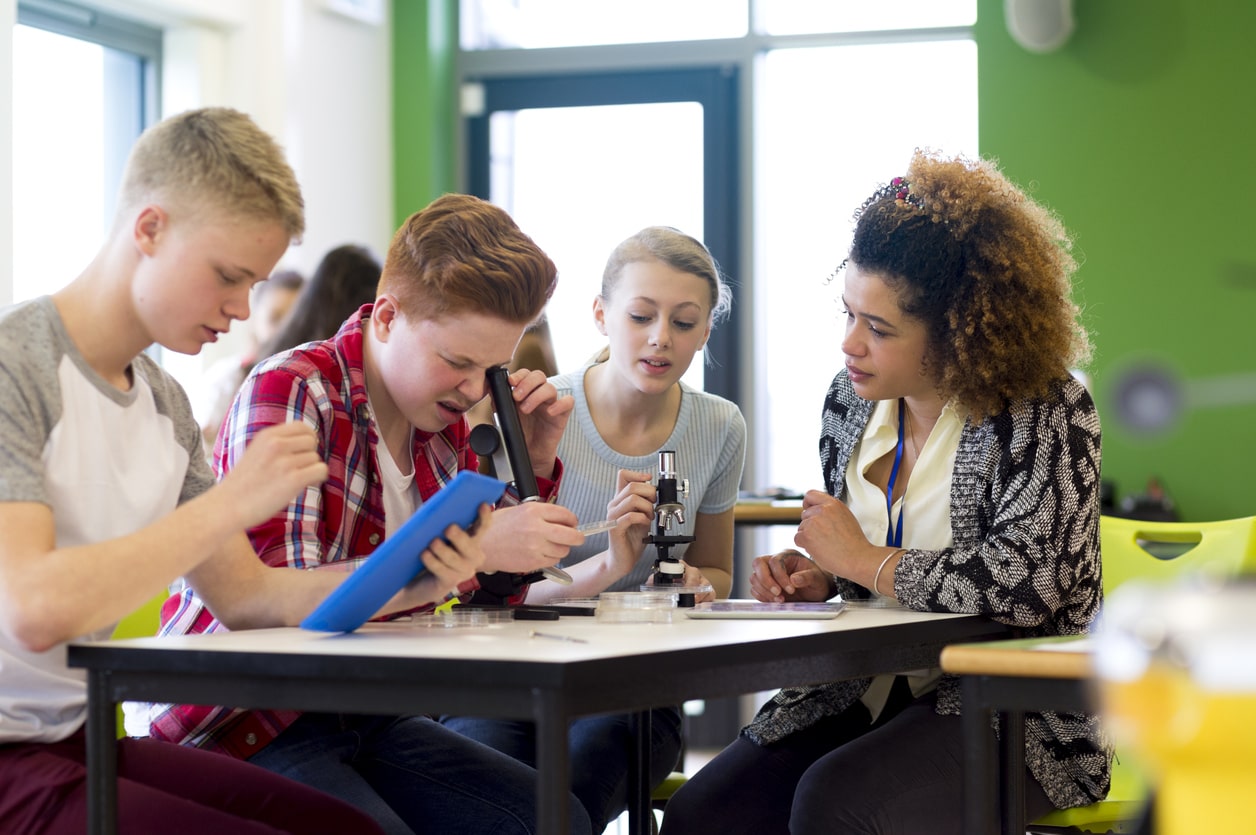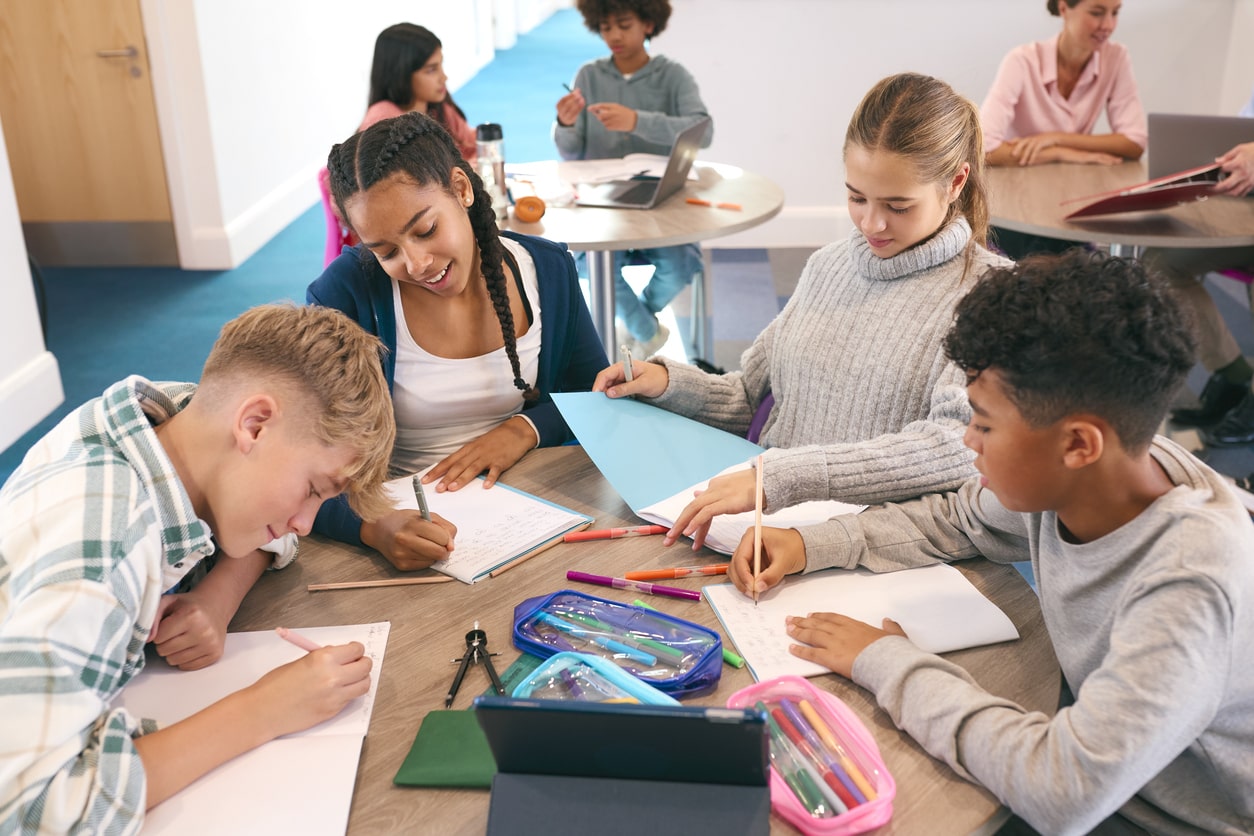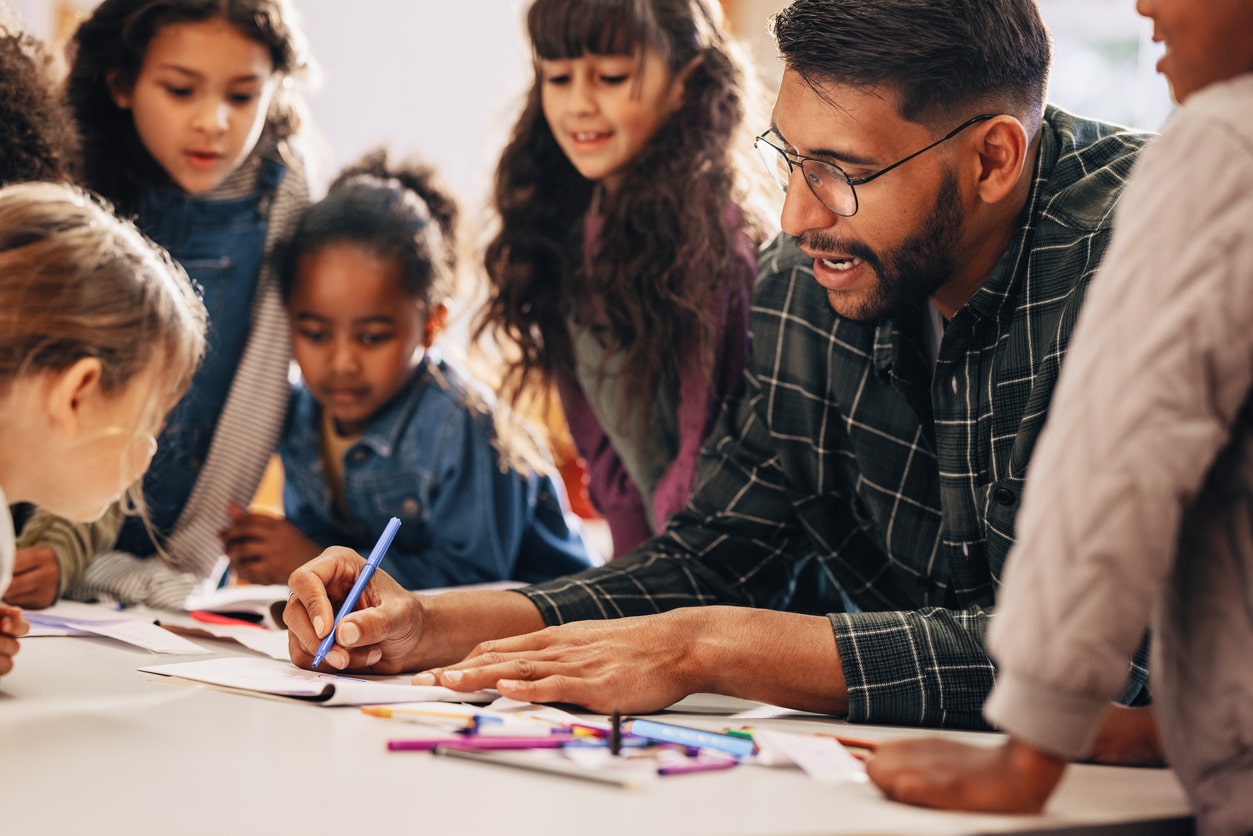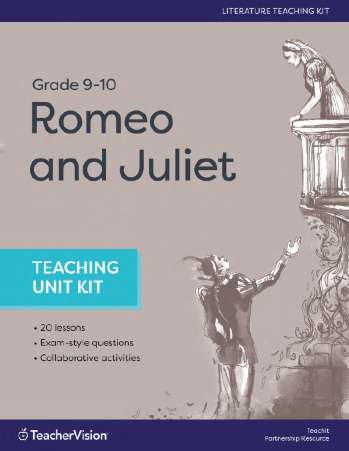Cooperative Learning: The Complete Guide for Teachers
In this comprehensive guide, we'll explore cooperative learning, a powerful instructional strategy where students work together in small groups to achieve a common goal. We'll delve into what cooperative learning is, why it's important, how to implement it in your classroom, and even discuss potential challenges you may face.
Whether you're a seasoned educator or new to teaching, this guide is designed to provide valuable insights and practical strategies to enhance your classroom environment.
What is Cooperative Learning?
Cooperative Learning, sometimes called small-group learning, is an instructional strategy in which small groups of students work together on a common task.
The task can be as simple as solving a multi-step math problem together, or as complex as developing a design for a new kind of school.
In some cases, each group member is individually accountable for part of the task; in other cases, group members work together without formal role assignments.

What Makes Successful Cooperative Learning?
According to David Johnson and Roger Johnson (1994), five basic elements allow successful small-group learning:
- Positive interdependence: Students feel responsible for their own and the group's efforts.
- Face-to-face interaction: Students encourage and support one another; the environment encourages discussion and eye contact.
- Individual and group accountability: Each student is responsible for doing their part; the group is accountable for meeting its goal.
- Group behaviors: Group members gain direct instruction in the interpersonal, social, and collaborative skills needed to work with others.
- Group processing: Group members analyze their own and the group's ability to work together.
Why is Cooperative Learning Important?
When implemented well, cooperative learning encourages achievement, student discussion, active learning, student confidence, and motivation. The skills students develop while collaborating with others are different from the skills students develop while working independently.
Increases Student Achievement
The authors of Classroom Instruction that Works cite research showing that organizing students in cooperative learning groups can lead to a gain as high as 28 percentiles in measured student achievement (Marzano, Pickering, and Pollock 2001).
Other researchers report that cooperation typically results in higher group and individual achievement, healthier relationships with peers, more metacognition, and greater psychological health and self-esteem (Johnson and Johnson 1989).
Prepares Students for Future Careers
As more businesses organize employees into teams and task forces, the skills necessary to be a "team player" (e.g., verbalizing and justifying ideas, handling conflicts, collaborating, building consensus, and disagreeing politely) are becoming more valuable and useful. Using cooperative groups to accomplish academic tasks not only provides opportunities for students to develop interpersonal skills but also gives them authentic experiences that will help them be successful in their future careers.
Offers Responsibility to Students
Cooperative learning changes students' and teachers' roles in classrooms. The ownership of teaching and learning is shared by groups of students, and is no longer the sole responsibility of the teacher.
The authority of setting goals, assessing learning, and facilitating learning is shared by all. Students have more opportunities to actively participate in their learning, question and challenge each other, share and discuss their ideas, and internalize their learning.
Helps Students Engage in Thoughtful Discourse
Along with improving academic learning, cooperative learning helps students engage in thoughtful discourse and examine different perspectives, and it has been proven to increase students' self-esteem, motivation, and empathy.

How to Use Cooperative Learning in Your Classroom
We’ll now help teachers prepare to implement cooperative learning. We’ve included tips on preparing students for group work, establishing team norms, forming groups, defining objectives, and assessing student learning. Plus, examples of cooperative learning in various subjects.
1. Prepare Your Students for Group Work
In classrooms where students are not familiar with working together in small groups, start with short, highly structured activities. It will take time to develop a respectful and safe classroom community.
You can help students learn the skills needed to work in groups by starting with short, structured lessons aimed at fostering turn-taking, involving all students in the discussion, and clarifying the roles, rights, and responsibilities of group members.
Don’t forget!: Successful cooperative groups depend on students who respect each other, listen to one another, and feel safe enough to share their thoughts and feelings.
2. Use a “Fishbowl” Exercise
One way to introduce cooperative groups is to work with one group to get started and allow the rest of the students to watch the group as they engage in a discussion – a "fishbowl" experience. Intervene when necessary to keep the thoughtful discussion going. With the large group, discuss effective strategies that the small group is using or should be using to continue and expand the discussion.
4. Establish Team Norms
When beginning to use cooperative learning with students, it is also important to establish team norms. Team norms are guidelines or rules governing how group members agree to work together. Norms for working in groups tend to be very different from traditional classroom norms. For example, in a traditional classroom, students complete their own work. In cooperative classrooms, students work with others to complete tasks. Have students discuss and develop the norms that they will follow during group work. Team norms, if designed well, can help to create a safe and supportive atmosphere.
Some examples of team norms include:
- We always treat one another with respect.
- We always encourage new ideas and value the consideration of all suggestions.
- We always justify our opinions to the team.
- We always make decisions as a team.
5. Establish Groups and Objectives
Students should be grouped for instruction to maximize opportunities to learn, and the type of grouping can produce different results based on the circumstances. Establish groups using a variety of criteria, such as social skills, academic skills, student interests, and instructional objectives.
Select the academic and collaborative objectives. For example, "Students will present their opinion of a candidate, supported with facts. Students will work cooperatively in groups of four, taking turns when talking."
Instruction should be based on solid content, with grouping used to enhance and customize student learning. Students should understand the objectives, instructional tasks, and criteria for success. Review and assign student roles in order to smooth the transition to cooperative learning groups. During instruction, monitor groups and reinforce collaborative behaviors, conduct observations, assess social skills, or interview students.
6. Allow Students to Complete the Task
Once the groups are set and the tasks are assigned, allow the students to proceed with the task. As they work, walk around the room, dropping into groups as needed. This allows you to gauge how things are going, answer any arising questions, and offer help where necessary.
7. Assessment
You will need to decide how students and groups will be made accountable for their learning. In collaborative classrooms, it is often difficult to assign individual grades. Some teachers give "group" grades that each student receives, but this can be problematic if a few students do the majority of the work within a group.
Giving each member both an individual and a group grade is another option. Each student can receive a grade for the group task and can be responsible for a subtask, which is graded as well.
Some teachers average the academic grade with a "group performance" grade. This makes group interactions and processes as significant as academics. If you are uncomfortable with this, a good solution is to have students complete an individual task after the cooperative learning activity, such as writing a reflection piece about what they learned and how their group worked to complete the task.
Be sure to schedule a time for students to explain to the class how they completed a task or solved a problem, as different groups may have developed different solutions. Explaining their group's process is an important skill for students to develop. In addition, the whole class benefits from the range of ideas from each group.

When Can You Use Cooperative Learning?
Cooperative learning can be used in any class at any level with any subject area. Cooperative learning works well when it is a part of the culture of a classroom, and when students are familiar with working together and know what is expected of them. The following are some ideas for using cooperative groups in your classroom.
English Class
Use cooperative learning during partner reading. Have students read silently and then take turns reading aloud. The listener can guide the reader when necessary.
Use cooperative groups during the writing process to brainstorm topics, to pre-write, and during peer review conferences. Use cooperative groups to write a "how-to" piece. Students, in groups, can write about how to make a model or drawing, exchange what they've written with another group, and collaborate to make the model or drawing.
Have students read texts and use a double-entry journal to list critical points and their responses. They can exchange their double-entry journals and create a summary of the assigned readings with a partner.
Math Class
Use cooperative groups to practice problem-solving strategies. Have student pairs use manipulatives to act out a problem. After solving a math problem, students can explain their thinking to a partner.
In cooperative groups, students can decide on a set of criteria to categorize geometric figures, and then explain their criteria to other groups.
Social Studies Class
Use a Jigsaw to review concepts and prepare for a test. In jigsaw groups, have students list important skills or concepts that are important enough to be on the test. In expert groups, have them write review questions. Then have students return to jigsaw groups to ask their two or three best questions, giving others in their group a chance to answer.
Science Class
Use cooperative groups to create and discuss hypotheses before completing experiments. Students can combine their prior knowledge about a topic and collaborate to make an educated guess.
Student Roles in Cooperative Learning
Some tasks are complex and may benefit from clear roles and responsibilities assigned to each student within a group. Create team roles that are simple, clear, and important. Roles that are frivolous, unclear, or too complex may frustrate one or more team members. Some sample roles are:
- Organizer—provides the group with the overall process structure
- Recorder—writes down important information (e.g., directions or group work)
- Checker—Makes sure that all team members understand the concepts and the team's conclusions.
- Questioner—generates questions and involves all students
- Assessor—evaluates the progress of each work session
- Encourager—models and reinforces appropriate social skills
- Summarizer: Restates the team's conclusions or answers.
- Spokesperson—represents the group and presents group work to rest of the class
- Timekeeper—keeps group on task and on time
- Team facilitator—Moderates discussions, keeps the team on schedule, ensures that work is completed by all, and makes sure that all have the opportunity to participate and learn.
- Elaborator—Relates the discussion with prior concepts and knowledge.
- Research runner—Gets needed materials and is the liaison between teams and between their team and the instructor.
At the start of a course, consider allowing team members to pick their own roles. As students become more comfortable with teamwork, however, it is a good idea to rotate roles within the teams so that students experience a variety of responsibilities.

Potential Challenges of Cooperative Learning
Some challenges of using cooperative learning include releasing the control of learning, managing noise levels, resolving conflicts, and assessing student learning. Carefully structured activities can help students learn the skills to work together successfully, and structured discussion and reflection on the group process can help avoid some problems.
Group Dynamics
Like all groups of people trying to work together, student groups sometimes run into difficulties. Be proactive and have ways prepared to prevent or solve problems. Some suggestions include:
- Brainstorm how groups could handle a specific difficult situation, such as one person not letting others talk. Have each group come up with a solution to the problem.
- Use a checklist to help students resolve conflicts. The checklist could have students assess how they are listening to each other, working together, and respecting each participant.
- Give clear written guidelines for each student role. Make sure that roles are clear before the activity begins.
- Establish a specific signal if the noise level is too high. Award points to each group for working quietly.
- Have students use their journals to record how they would like their group to implement a specific collaborative skill. For example, if students know that the collaborative skill they will work on in their small group is "disagreeing nicely" they could write down what they could say. They could also reflect on why that skill is important to them and to the group.
Find other suggestions on improving group dynamics.
How Can you Stretch this Activity?
As students become more familiar with cooperative group structures, have them take more ownership of the process. Have students determine how to break into groups, determine their group needs, and create and assign student roles. Students can create a list of collaborative and other social skills that they think could be improved, and develop a plan to work on those skills in their groups.
As groups begin to develop, have students reflect on how the group is functioning. Have students discuss their group's progress in interpersonal skills, and have them problem-solve the challenging dynamics of the group. This type of reflection will help students develop their metacognition and articulation skills. Students can reflect on their contributions to the group and monitor their own progress either as part of a discussion or in a written reflection.
In groups that stay together over a long period of time, and as students become familiar with each other's strengths and challenges, they should be given more autonomy in choosing roles and developing a process for completing the task. Encourage students to think about how they are progressing as a group and the challenges that they face, as well as how they are progressing academically and how to improve the quality of their work as a team.
Cooperative Learning Lesson Plans
The following TeacherVision lesson plans include cooperative learning strategies:
This is a primary lesson plan that uses tangrams to introduce teamwork.
Explaining How to Make a Bar Graph
This is a primary lesson in which students work in teams to describe how to make a bar graph.
See the Research that Supports this Strategy
Johnson, D. W., & Johnson, R. T. (1989). Cooperation and competition: Theory and research. Interaction Book Company.
Johnson, D. W., Johnson, R. T., & Holubec, E. J. (1994, January 1). Cooperative Learning in the Classroom. Association for Supervision & Curriculum Development.
Marzano, R. J., Pickering, D., & Pollock, J. E. (2001, January 1). Classroom Instruction that Works. ASCD.















